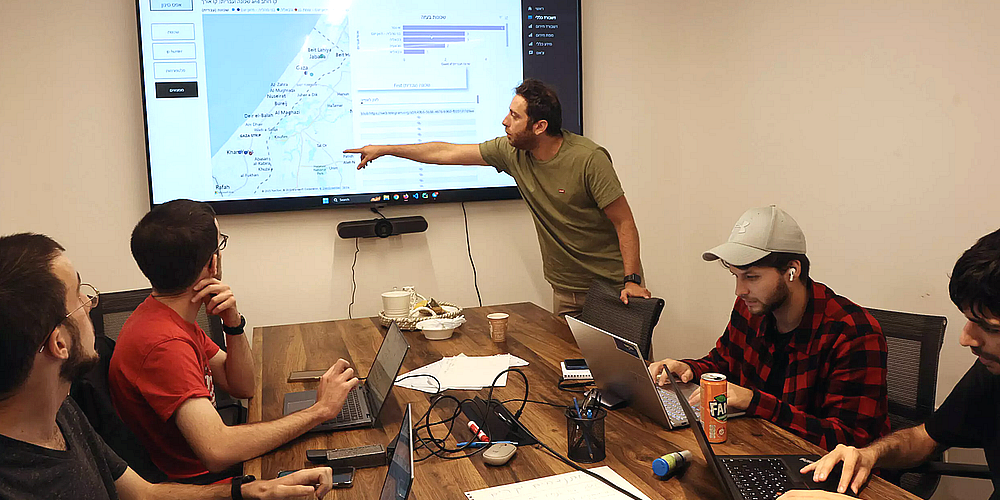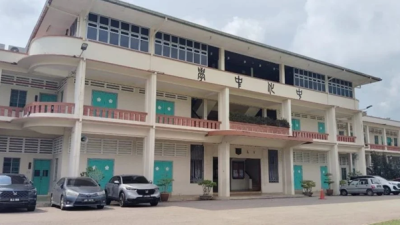
TEL AVIV: It looks like any other scrappy Tel Aviv tech start-up, with staff in hip clothing huddled around laptops and downing espressos, but they are the volunteers in a “war room” assembled to help Israel bring home the hostages.
Gunmen from the Islamist Hamas seized more than 220 people — including Israelis, foreigners and dual-nationals — when they stormed across Gaza’s border with Israel on October 7 and, according to Israeli officials, killed more than 1,400 people.
Within days, as Israel launched reprisal strikes that the health ministry in the Hamas-run Gaza Strip says have now killed more than 6,500 people, volunteers from Israel’s thriving tech sector teamed up to lend a hand in the hostage crisis.
“We are a civilian war room. Our main purpose is to save lives,” said Refael Franco, 48, the chief executive of Code Blue — a cyber crisis management firm leading the effort at Gitam BBDO communications group in Tel Aviv.
“We collect. We compare. We deliver,” Franco explained with a brand-ready slogan, as he pored over detailed, digital maps of Gaza dotted with color-coded markers linked to specific information about the captives.
For years, Israel’s tech sector has emerged as a formative pillar underpinning the country’s economy, with cyber security firms in particular serving as a powerful driver of growth and innovation.
Seemingly overnight, volunteers from the sector began meeting at the Gitam group’s offices where they pooled their expertise with artificial intelligence and innovative platforms to assist in identifying the missing in the aftermath of the Hamas attacks.
In this makeshift response center, volunteers have spent days combing through the deluge of social media posts across myriad platforms to gather information about the captives.
After amassing a database of images from social media in tandem with photos provided by families of the missing and kidnapped, the team then feeds the evidence into artificial intelligence software specializing in facial recognition.
With assistance from experts in geolocating, programmers, and Arabic speakers, the team has rapidly pieced together an emerging picture of who was abducted, when they were last seen and where.
The information is then shared with the Israeli military’s special unit overseeing the hostage crisis, with around 60 captives successfully identified by the team to date.

Mobilization
The tech community’s reaction to the hostage crisis represents just a microcosm of the sweeping mobilization happening across Israel, with the young and old volunteering en masse to support affected families, soldiers and a range of other response efforts after the October 7 attacks.
The hostage crisis has been particularly haunting.
Amid the trauma unleashed by the Hamas massacre, the hostage crisis remains an open wound, fueling anxiety and uncertainty during what Israeli leaders say will be a long war with the militant group.
“People here left their jobs. There are CEOs and CTOs and founders of companies that put everything aside and just came here… to help,” said Ido Brosh, a 24-year-old volunteer programmer at Gitam BBDO with expertise in military intelligence.
“It’s horrible that this event made us so unified, but that’s also the beauty of this country. In times of crisis, we come together.”
But even as the tech community pools its resources to help with the hostage response, the agony for the families of those held captive remains excruciating.
For 82-year-old Holocaust survivor Tsili Wenkert, the abduction of her grandson, Omer Weknert, from a music festival in southern Israel near the border with Gaza has brought an unending torrent of pain.
“What I’ve been through in the past is small. I’m now living through a nightmare,” she told AFP.
“It’s very hard for a grandmother at my age to know her grandson is a captive.”
The 22-year-old was last seen in footage posted on a Hamas-linked Telegram channel, showing him stripped to his underwear and bound in the back of a truck filled with armed militants, celebrating as they returned to Gaza.

‘Bring her back’
Just four hostages have been released to date, thanks in part to backchannel negotiations involving Egypt and Qatar.
Yocheved Lifshitz, 85, was among those freed. Following her release this week, she told reporters from a wheelchair that she was led through a “spider web” of tunnels under Gaza, where she was held with other captives.
The presence of the hostages will likely complicate the widely anticipated ground offensive by the Israeli army following weeks of air strikes across the besieged Gaza Strip.
But even amid the exhaustion and trauma triggered by the October 7 attacks, the ongoing hostage crisis has stirred resolve in many.
For Omri Marcus, a creative director working on a campaign to battle misinformation at Gitam BBDO, the project is personal.
Marcus pointed to the wallpaper image on his laptop — a picture of his best friend’s cousin who is among the kidnapped. The photo, he said, serves as a constant reminder of the mission at hand.
“She’s now… in Gaza,” he said. “And we need to bring her back.”
ADVERTISEMENT
ADVERTISEMENT








































